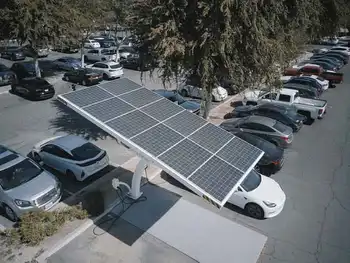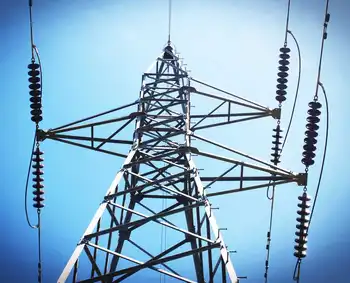Sustainable energy plan has rivals green with envy
By Toronto Star
CSA Z463 Electrical Maintenance
Our customized live online or in‑person group training can be delivered to your staff at your location.

- Live Online
- 6 hours Instructor-led
- Group Training Available
His baby on the energy file, the Green Energy and Green Economy Act, was passed into law in May. The consensus is that the document is great in principle, but the details are what matter to those energy developers, homeowners, communities and utilities sitting anxiously on the sidelines.
They're awaiting the centrepiece of Smitherman's green-energy vision, a "feed-in tariff" (FIT) program designed to spark investment in renewable energy projects and create tens of thousands of jobs to go with them. Under the FIT, very small to large producers of green electricity can fetch a premium for the power they generate – up to 80.2 cents per kilowatt for solar and between 11 and 19 cents for all other forms of green power.
Word is the program will be launched this month, quite likely this week, and if Ontario gets the rules right it will be looked upon by the rest of North America with green envy. There's much a stake, not just for Smitherman, but also for a government that desperately needs to boost employment and make good on its promise of shutting down all coal plants by 2014. Here are a few outstanding issues that, depending on how they're dealt with, could turn the FIT program into an international success story:
• Local content – Smitherman said he would create local content rules for projects that fall under the FIT program. It's a laudable goal, as it would help assure that Ontario steel, concrete, know-how and technology make their way into the solar fields, wind farms, biogas facilities and mini-hydro plants expected to get built.
Speculation is that as much as 50 per cent of any project over a certain size must eventually be made or sourced from Ontario.
It's also expected the government will phase in these requirements, which makes sense.
Fact is, there is only one company in Ontario that manufacturers solar panels – Woodbridge-based SolGate Solar – and it takes time for newcomers to set up shop. A similar situation exists for wind and other renewables.
If local content rules are too stringent at the outset, it could stop projects in their tracks.
Local content requirements must be high enough to attract investment in local manufacturing and skills, but not so tough that they smother the market before it takes off.
• Wind setbacks – Another contentious issue is the proposed 550-metre setback rule for the placement of wind turbines.
It was created to placate rural and anti-wind groups, many of which claim wind turbines make people sick, but the setback doesn't appear to satisfy any side.
Those opposed to wind development say the setbacks should be at least a kilometre, while the wind developers say 550 metres is not based on science and could ruin the economics of dozens of projects across southern Ontario.
If the 550-mark sticks, it will be interesting to see how much, if it all, it slows down wind development.
• Farmland ban – Smitherman has also said that he'll ban the development of large solar farms on prime agricultural land.
Those who support such a ban say there is plenty of space in Ontario to develop solar farms so there is no need to use land better left for crops. The big solar developers argue there's plenty of farmland not currently being used and that they need access to flat farmland because, unlike an industrial brownfield site, it's easier and less costly to build on.
Both sides have a point, but what's clear is that the government is being hypocritical. It encourages farmers to grow corn that's used to produce public-subsidized ethanol, but it looks down on using the same land to produce clean electricity. More than that, the solar option is three-times more efficient than using land to grow corn for ethanol.
The Canadian Solar Industries Association claims the farmland ban will kill big projects in Ontario and that, without such large-scale ventures, demand for solar panels will never grow high enough to attract investment in local manufacturing.
Smitherman, however, most likely wants to limit the number of large solar farms because too much premium-priced solar on Ontario's grid would start to push up prices for electricity consumers.
• Security deposits – To make sure those applying for a FIT contract are serious about following through, the power authority is requiring all applicants to put down a series of security deposits totalling $30,000 for every megawatt of proposed wind, hydro or biomass generation ($75,000 per megawatt in the case of solar).
The idea of security deposits makes sense as a way to discourage "squatters" – that is, developers that acquire a pipeline of projects with the intention of selling the pipeline, not building the projects.
And the deposit isn't overly onerous under most scenarios. If you're a retailer that wants to install a 100-kilowatt rooftop solar system, it equates to $7,500.
But what if you hope to build a large project? For example, one company wants to build a 700-megawatt offshore wind farm in Lake Ontario.
The security deposits for that amount to $21 million. That's a lot of upfront dollars to put up before a project starts generating electricity. The power authority won't pay interest back on that amount, so from an investors' perspective it amounts to dead money.
Out of fairness, the power authority should set up a separate security deposit structure for projects larger than 100 megawatts.
On a final note, Smitherman seems convinced that the set tariffs – that is, the amount the province is willing to pay for every kilowatt of clean energy produced under the FIT program – is high enough to provide developers a reasonable return on their investment. That may be the case, but it won't make it any easier for newcomers to raise money for their projects.
As it stands, those that stand to benefit the most from the Ontario program are community and aboriginal groups, which are getting strong government support and financing – and large international power developers with strong balance sheets and a track record that makes banks feel comfortable.
Medium-sized, local developers that have little clout within the financial community are potentially the biggest losers. Banks aren't prepared to finance these less established developers.
This is especially true for Canadian banks, which simply don't have experience financing capital-intensive renewable energy projects.
This is where Ontario, despite Smitherman's reluctance, needs to join the Americans by creating loan guarantees for certain renewable energy projects that meet a higher standard for local content.
The funds that would back these loan guarantees could be raised initially through the issuance of green bonds to the public.
Offering loan guarantees would get more projects developed, and as a result create more jobs and incentives for locating manufacturing in Ontario.
It would also help Canadian financial institutions get some much-needed experience and more comfort with bankrolling home grown renewable energy projects they would otherwise ignore.
All of the above isn't to downplay the amount of work and effort that has got us to this stage.
Ontario is setting the standard in North America, and others are watching closely to see what works and what flops.











